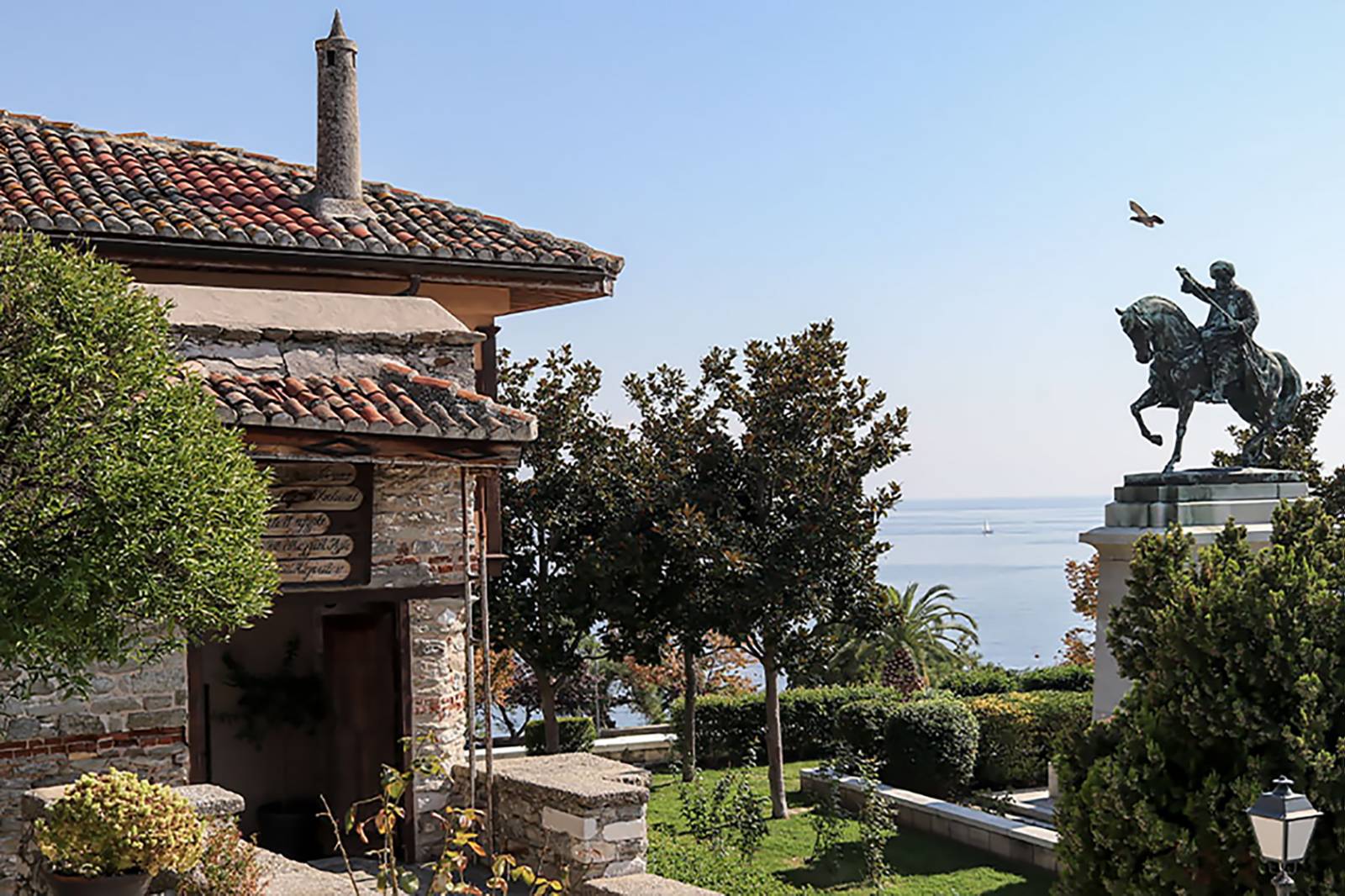Romeyka

Duration:
29/03/2024 - 28/04/2024
Curated by:
Prof. Ioanna Sitaridou, University of Cambridge
and Queens’ College


Duration:
29/03/2024 - 28/04/2024
Curated by:
Prof. Ioanna Sitaridou, University of Cambridge
and Queens’ College

About the exhibition
This exhibition is the result of a long collaborative process that strives to enhance public awareness around the endangered status of Romeyka in contemporary Turkey. Romeyka is a Greek variety currently spoken by several communities across the Trabzon area and it presents us with an invaluable linguistic and sociocultural imprint. The language is endangered and, unless necessary measures are implemented, it is to be extinct soon. Heritage preservation, however, is an arduous endeavour and requires a comprehensive and collaborative plan well beyond the scope of this exhibition. Yet, we hope this exhibition could contribute to wider social deliberation and reflection, among the (heritage) speakers on either side of the Aegean, about the past, present, and future of the language.
Romeyka’s closest cognate is Pontic Greek as spoken in Greece and, although there are grammatical differences, today there is no doubt that together they constitute a significant branch of Asia Minor Greek. The Fall of Trebizond to the Ottomans in 1461 saw the city becoming predominantly Muslim a century later; the capture of Trebizond must have led many Greeks inland, with extensive Islamisation of the area in the 16th/17th CE. Intriguingly, though, while conversion to Islam across Asia Minor has conventionally been accompanied by a linguistic shift to Turkish, communities in the Valleys have retained Romeyka to this day. Crucially, because of the Islamisation, these communities retained some archaic features, while the varieties of the Greek-speaking communities who remained Christian converged with Modern Greek, especially because of extensive schooling in the 19th and early 20th CE and the subsequent exodus from Pontus and arrival in Greece in 1922 following the dramatic events of the early 20th century.
As you move along the exhibition, you will see archival diary material—previously unpublished—from Exeter College, Oxford and photographic material from the British School of Athens, which gives us a glimpse into the Greek-speaking communities and language in the southern Black Sea shores 110 years ago, as recorded by Dawkins, one of the first fieldworkers in the area. This is combined with photographs and video material from Sitaridou’s ongoing fieldwork of the last 16 years. The material on display is intended to give a glimpse of the area she worked in and is loosely organised to provide the viewer with a sense of freedom and flexibility to create their own meaning. Taken in intimate contexts, always with the consent of those involved, the recordings are remnants of encounters, feelings and relations throughout the study. They were not intended to be part of a professional photography exhibition and thus their style, technique, and organisation are, rather, reflections of rather unpolished feelings and thoughts. However, this emotion-triggering material is sharply juxtaposed to the academic endeavour as captured by multi-lingual/dialectal explanation panels and audio material interspersed throughout, whose purpose is to communicate the importance of the linguistic findings as published in international linguistic journals. Crucially, these academic findings and conclusions were achieved precisely thanks to both the abundance and quality of the collected data, which, in turn, very much depended on building these relations within the communities.
We hope that the exhibition will generate further reflections on endangered heritages, fragmented and shared identities and collective memory, besides helping us acquire a better grasp of multilingualism, localised experiences, intergenerational stories of co-existence and displacement, diasporic selves and language loss, and alternative modalities of being and belonging in both Greece and Turkey.

The Venue

MOHA Research Center
6, Th. Poulidou Str, Kavala
65201, Greece
Contact
Tel.: +30 2510 620
515
E-mail: info@moha.center



A fieldwork-based exhibition
on the past & present of Romeyka in Turkey

Visit Us
Visiting Hours:
Every day, except
Tuesday & Wednesday
10:00 – 14:00
You need to book a digital ticket here or on arrival with the help of museum staff.
Full admission: 5 €
Children, Students, Unemployment card holders: 3 €
Ticket prices concern the standard entry fee to the museum and ticket revenue goes to MOHA.

Educational Visits
We would be delighted to welcome school visits. Please contact us at info@moha.center to book a guided tour.
School visits are free. The guided tour lasts approximately one hour and it has to be scheduled within the museum's opening times. The maximum number of students we can welcome is 20 students every half an hour.
About Us
Curator and Concept: Prof. Ioanna Sitaridou, University of Cambridge and Queens’ College
Research Assistant: Konstantina Vardavoulia
Organisational support: Ismini Miha, ΜΟΗΑ
Visual Identity and Exhibition Design: Studio Hervik
Catalogue Productions: Chryssa Moisidou for Octana
Funders

Partners
